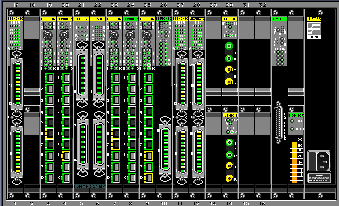
Instumentation Facilities include two large NMR Laboratories, Mass Spectormetry Laboratory, and X-ray Diffraction Laboratory. Very large data sets are routinely generated in these laboratories, especially in the NMR facilities where a single 3D spectrum is typically in 100s of Mbytes and larger 3D, 4D, and higher dimension data sets are well over 1GByte. Moving these data sets between areas of collection to workstations where the data is processed elsewhere in MolSci or in MBI, clearly indicates that even switched Ethernet is inadequate for this application. NFS mounted magnetic and optical drives and extensive use of heavy graphical applications run remotely over X11 put further stress on the network.
Organic Chemistry Computing Laboratories make extensive use of NFS services and Distributed Queing Systems to perform Molecular Mechanics, semi-empirical, and ab initio calculations that often run continually on a number of scientific workstations located in the building. Similar calculations are submitted to a number of National Supercomputer Centers and sizable data sets are often moved back and forth. Scientific Visualization programs run over the X11 protocol add to network traffic.
Application described above and the resulting network traffic currently exceed the demands placed on our networks by users of Internet services and emerging video conferencing and remote learning technologies.
Migration to faster network technologies like switched Fast Ethernet and ATM would provide immediate benefits to the MolSci Building Network and Chemistry/MBI networks in general.